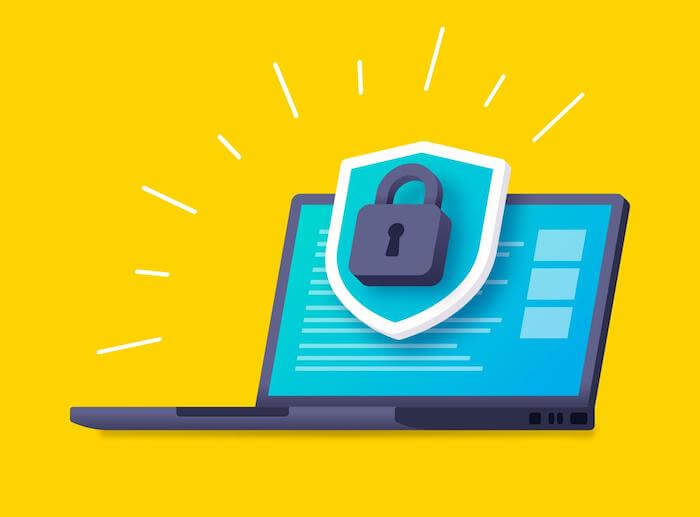
In today’s digital age, cybersecurity has become an increasingly critical concern for businesses of all sizes. Cyberattacks can result in significant financial losses, damage to a company’s reputation, and the loss of sensitive data. As a result, businesses must implement best practices to ensure the security of their computer systems, networks, and data.
In this article, we will explore the best practices for ensuring cybersecurity in your business, including risk assessment, employee training and awareness, password management, network security, data backup and recovery, incident response planning, and third-party vendor management.
By implementing these practices, businesses can reduce their risk of cyberattacks and protect themselves and their customers from potential harm.
1. Carrying Out Risk Assessment
Risk assessment is the process of evaluating the potential threats and vulnerabilities that can impact a business’s computer systems, networks, and sensitive data. It involves identifying the likelihood and potential impact of various types of cyberattacks, such as phishing scams, ransomware, and malware. This process enables businesses to prioritize their cybersecurity efforts and allocate resources effectively. By conducting regular risk assessments, businesses can stay up-to-date with emerging threats and vulnerabilities and adjust their security measures accordingly.
A comprehensive risk assessment is essential for businesses to understand their cybersecurity posture, identify their most significant risks, and develop effective strategies to mitigate them. This process requires a thorough analysis of the organization’s systems, networks, and data, as well as an understanding of the latest cyber threats and trends. With a comprehensive risk assessment in place, businesses can take proactive measures to prevent cyberattacks and minimize the impact of any security breaches. Ultimately, a robust risk assessment process can help businesses safeguard their assets, protect their customers, and maintain their reputation.
2. Having Employee Training and Awareness
Employee training and awareness are essential components of any cybersecurity strategy. In today’s digital age, employees are the first line of defense against cyber threats, and their actions can significantly impact a business’s security posture. Businesses must invest in comprehensive employee training programs to educate their staff on cybersecurity best practices, policies, and procedures.
Training employees on the importance of cybersecurity and how to detect and respond to potential threats can help businesses reduce the risk of cyber attacks caused by human error. This training should include information on how to identify phishing emails, use strong passwords, and securely store sensitive data. Employees should also be aware of their roles and responsibilities in maintaining a secure environment and how to report any security incidents to the appropriate personnel.
In addition to training programs, businesses should also implement ongoing awareness campaigns to keep employees informed of the latest cybersecurity threats and trends. These campaigns can include regular email updates, newsletters, or in-person presentations. By promoting a culture of cybersecurity awareness, businesses can help ensure that employees understand the importance of protecting sensitive information and take an active role in maintaining the organization’s security posture. Overall, effective employee training and awareness can help businesses reduce the risk of cyberattacks and protect their assets and reputation.
3. Having to Manage Your Password For Cybersecurity
Password management is a critical aspect of any cybersecurity strategy. Weak or compromised passwords can be a significant vulnerability in a business’s security defenses, providing cybercriminals with easy access to sensitive information. As a result, businesses must implement password management policies and procedures to ensure that employees use strong passwords and keep them secure.
Effective password management involves several best practices, such as using unique and complex passwords, avoiding the use of personal information or common phrases, and regularly updating passwords. Employees should also be encouraged to use two-factor authentication, which adds an extra layer of security to their accounts. Additionally, businesses should implement policies that require employees to change their passwords regularly and prohibit the sharing of passwords among employees.
To manage passwords effectively, businesses should also use password management tools such as password managers. These tools can help employees generate complex passwords and securely store them. Using password managers also eliminates the need for employees to remember multiple passwords, which can improve productivity while reducing the risk of human error.
Overall, effective password management is crucial for businesses to maintain a strong cybersecurity posture. By implementing strong password policies and providing employees with the necessary tools and training, businesses can significantly reduce the risk of cyberattacks caused by weak or compromised passwords.
4. Cybersecurity Network Security
Network security refers to the practices and technologies that businesses use to protect their computer networks from cyber threats. A secure network is crucial for safeguarding sensitive information and preventing unauthorized access to a company’s systems and data. To ensure network security, businesses must implement several best practices, including firewall protection, intrusion detection and prevention, and access control.
Firewall protection is an essential component of network security. Firewalls act as a barrier between a business’s internal network and the internet, filtering out unauthorized traffic and blocking potential threats. Intrusion detection and prevention systems are also critical for identifying and stopping cyber attacks in real time. These systems monitor network activity for suspicious behavior and block any unauthorized attempts to access the network.
Access control is another critical aspect of network security. Businesses must implement strict access control policies and procedures to ensure that only authorized users can access the network. This includes using strong authentication methods, such as multi-factor authentication, and limiting access to sensitive data on a need-to-know basis.
Innovative Tech Solutions, Tailored for You
Our leading tech firm crafts custom software, web & mobile apps, designed with your unique needs in mind. Elevate your business with cutting-edge solutions no one else can offer.
Start NowTo maintain network security, businesses should also conduct regular security audits and vulnerability assessments. These assessments help identify potential vulnerabilities in the network and allow businesses to take proactive measures to address them before cyber attackers can exploit them.
Overall, network security is a critical component of any cybersecurity strategy. By implementing the right technologies and best practices, businesses can significantly reduce the risk of cyber-attacks and protect their sensitive data and assets.
5. Creating a Data Backup and Recovery For Your Cybersecurity
Data backup and recovery refer to the processes and technologies that businesses use to protect their data from loss or damage and recover it in the event of a cybersecurity incident. Data loss or corruption can occur due to various factors such as hardware failure, natural disasters, cyberattacks, or human error. Therefore, businesses must have a robust data backup and recovery plan in place to ensure the continuity of their operations.
An effective data backup and recovery strategy involves regular backups of critical data and the use of multiple backup locations to ensure redundancy. Businesses should also consider implementing automatic backup processes to reduce the risk of human error. Additionally, backups should be encrypted and stored securely to prevent unauthorized access or data breaches.
In the event of a cybersecurity incident, businesses must have a plan in place to recover their data quickly and minimize the impact of the incident on their operations. This involves identifying the cause of the incident, isolating affected systems, and restoring data from backups. Regular testing of data recovery processes is essential to ensure their effectiveness and identify any gaps that need to be addressed.
Overall, data backup and recovery are critical components of any cybersecurity strategy. By implementing a robust backup plan and recovery processes, businesses can minimize the risk of data loss, ensure the continuity of their operations, and quickly recover from cybersecurity incidents.
6. Having an Incident Response Plan
An incident response plan is a set of procedures and protocols that businesses use to manage and respond to cybersecurity incidents effectively. Cybersecurity incidents can range from minor security breaches to major data breaches, and businesses must be prepared to respond to any situation effectively.
An effective incident response plan involves several best practices, including identifying potential cybersecurity incidents, assessing their severity and impact, and defining response procedures. Businesses should also consider implementing automatic alerting systems to notify security personnel of potential incidents in real time.
An incident response plan should also define roles and responsibilities for different stakeholders in the business. This includes identifying key personnel responsible for responding to incidents, such as IT staff, legal counsel, and management, and defining their roles and responsibilities. Regular training and simulations of incident response scenarios are also essential to ensure that personnel understand their roles and can respond quickly and effectively.
To sum it up, an incident response plan is a critical component of any cybersecurity strategy. By implementing a robust plan and procedures, businesses can minimize the impact of cybersecurity incidents on their operations, protect sensitive data and assets, and maintain the trust of their customers and stakeholders.
7. Third-Party Vendor Management
Third-party vendor management is an important aspect of ensuring the cybersecurity of a business. It refers to the process of evaluating and managing the risks posed by third-party vendors who have access to a business’s data, systems, or networks.
Businesses must establish a comprehensive vendor management program to manage the cybersecurity risks posed by third-party vendors. This involves assessing vendor security controls, defining security requirements, and monitoring vendor compliance with security policies and procedures.
Vendors may pose cybersecurity risks to businesses due to insufficient security controls, a lack of oversight, or inadequate training of their personnel. Therefore, businesses must ensure that vendors adhere to security policies and procedures and provide regular training to their personnel to increase their awareness of cybersecurity risks and best practices.
Conducting regular audits and assessments of vendor security practices can help businesses identify potential vulnerabilities or risks. By identifying these risks, businesses can make informed decisions about whether to continue working with vendors or terminate their relationships to minimize the risk of cybersecurity incidents.
In conclusion, businesses must establish a robust vendor management program to ensure the security of their systems and data. By implementing effective vendor management practices, businesses can minimize the risk of cybersecurity incidents arising from third-party vendors and protect their data and assets.
Conclusion
As cyber threats continue to evolve, businesses must remain vigilant and proactive in their approach to cybersecurity. The best practices discussed in this article, including risk assessment, employee training and awareness, password management, network security, data backup and recovery, incident response planning, and third-party vendor management, provide a solid foundation for ensuring the cybersecurity of a business.
However, the cybersecurity landscape is constantly evolving, and businesses must keep up with the latest trends and developments in the field. One trend that is likely to continue is the growing use of artificial intelligence and machine learning to detect and respond to cyber threats. AI-powered cybersecurity tools can help businesses automate threat detection and response, improving their overall cybersecurity posture.
Another trend is the increasing use of cloud-based services and the need to secure cloud environments. As businesses move more of their operations to the cloud, they must ensure that their cloud environments are secure and that they are implementing best practices for securing cloud-based applications and services.
Finally, the proliferation of internet-connected devices, including the Internet of Things (IoT), poses new challenges for cybersecurity. Businesses must ensure that they are implementing security controls for IoT devices and that they are monitoring and managing the security of these devices.
In conclusion, while the cybersecurity landscape is constantly evolving, businesses can take proactive steps to ensure the security of their systems and data. By implementing best practices for cybersecurity and staying up-to-date with the latest trends and developments, businesses can protect their data and assets and maintain the trust of their customers and stakeholders.
Before you go…
Hey, thank you for reading this blog to the end. I hope it was helpful. Let me tell you a little bit about Nicholas Idoko Technologies. We help businesses and companies build an online presence by developing web, mobile, desktop, and blockchain applications.
We also help aspiring software developers and programmers learn the skills they need to have a successful career. Take your first step to becoming a programming boss by joining our Learn To Code academy today!
Be sure to contact us if you need more information or have any questions! We are readily available.











